Firmware Updates Redefined with Over the Air Technology
The journey of updating embedded systems has seen a remarkable evolution, beginning with the inception of Over-The-Air (OTA) technology. In the early 2000s, OTA updates represented a significant leap forward, allowing wireless transmission of software updates to embedded devices. This technology eliminated the need for physical connections and manual interventions, marking a new era in device maintenance and software management. This advancement was pivotal in managing the growing complexity and security needs of IoT devices. OTA technology has become more widely used as mobile devices and their applications have grown. Over the Air updates’ potential was expanded when mobile operators and telecommunication companies commandeered them specifically to send updates through methodologies like SMS. These updates can configure SIM cards, roll out system updates, or provide access to services like WAP (Wireless Access Protocol) or MMS (Multimedia Messaging Service).
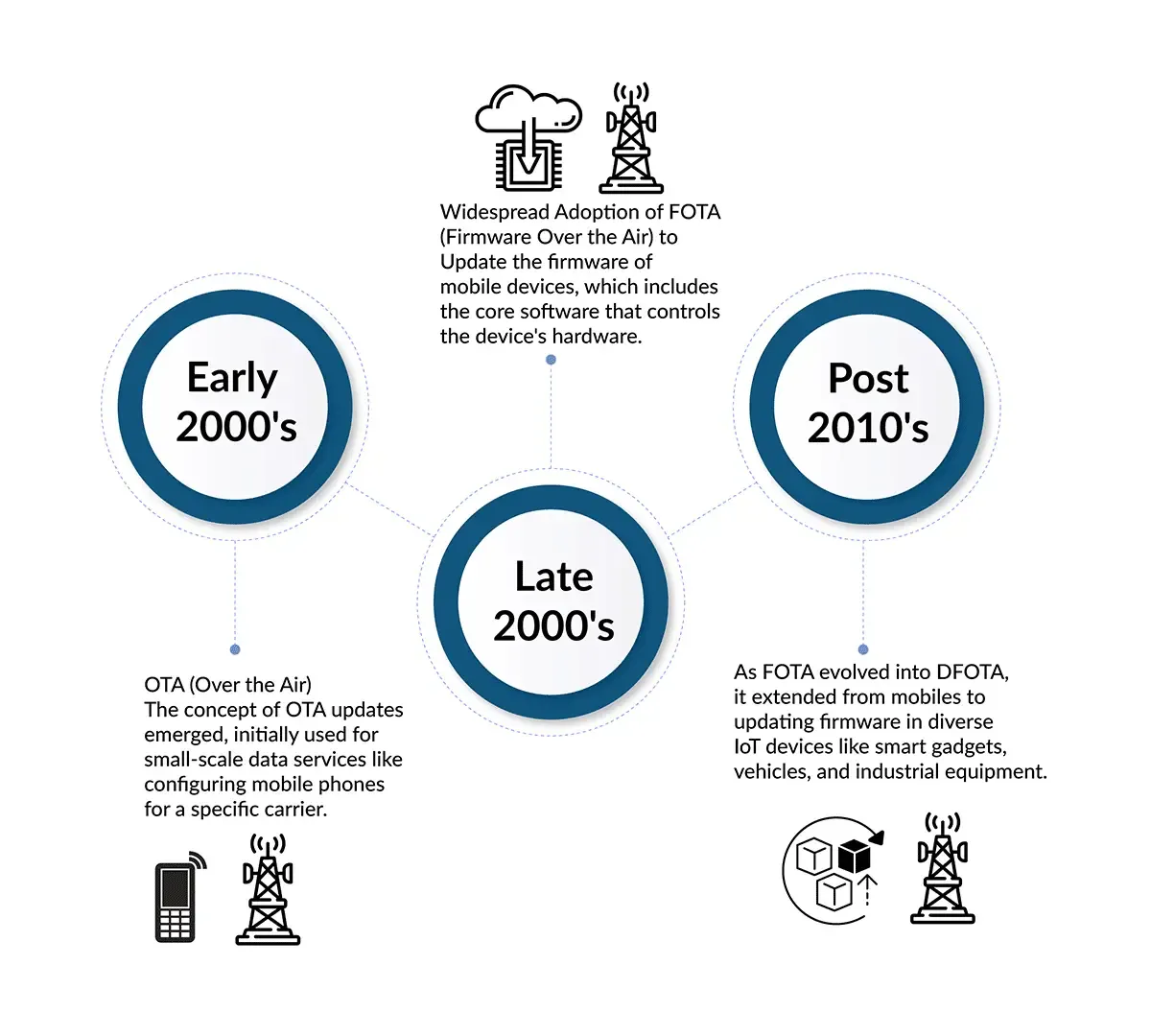
This sudden shift in the way one could flash the firmware of an embedded system without a physical intervention spurred OEMs to utilize OTA updates to issue updates and fix firmware bugs.
As IoT devices proliferated, the demand for more efficient update mechanisms led to the advent of Firmware Over-The-Air (FOTA) updates. FOTA, emerging prominently in the late 2000s, provided a more targeted approach, focusing on the firmware – the crucial software that controls device hardware. Since then FOTA has evolved into DFOTA which stands for Delta Firmware Update Over-The-Air, which enables updating firmware in smaller parts conserving bandwidth.
The Cavli C16QS module was engineered to take advantage of this evolutionary journey. Embedded with LTE Cat 1bis technology and powered by the Qualcomm QCX216 processor, the C16QS stands as a blend of robust connectivity and affordable price. The C16QS is simultaneously a leap towards future-proofing IoT devices due to features like a compact design, measuring just 26.5 mm x 22.5 mm x 2.3 mm, designed for LGA form factor. Moreover, the module offers integrated GNSS which can function independently of cellular connections. All this is further enhanced by the lightweight FreeRTOS with which the module is bundled, as it is a lightweight OS with low memory requirements, enabling users access to more processing power.
Introducing DFOTA in Cavli C16QS LTE Cat 1bis Module
Delta Firmware Updates over the Air (DFOTA) represents the next stage of evolution in OTA technology and Cavli has pioneered this novel tech into the most affordable IoT module in our versatile portfolio. This innovative approach to firmware updates redefines update strategy, allowing only the modified sections of the firmware to be transmitted and updated. This method is not only data-efficient but also ensures the stability and reliability of the existing firmware, facilitating iterative updates.
DFOTA is particularly crucial in IoT environments where device deployment occurs in real-time sectors, like for example banking or POS machines. Traditional firmware updates, which require transmitting the entire firmware package, are not only data-intensive but also riskier as updating requires longer downtimes of certain systems and also in terms of potential update failures. DFOTA mitigates these risks as the pre-requisites for flashing happens in the background without disturbing routine module behaviour, making the C16QS a reliable choice for critical IoT applications.
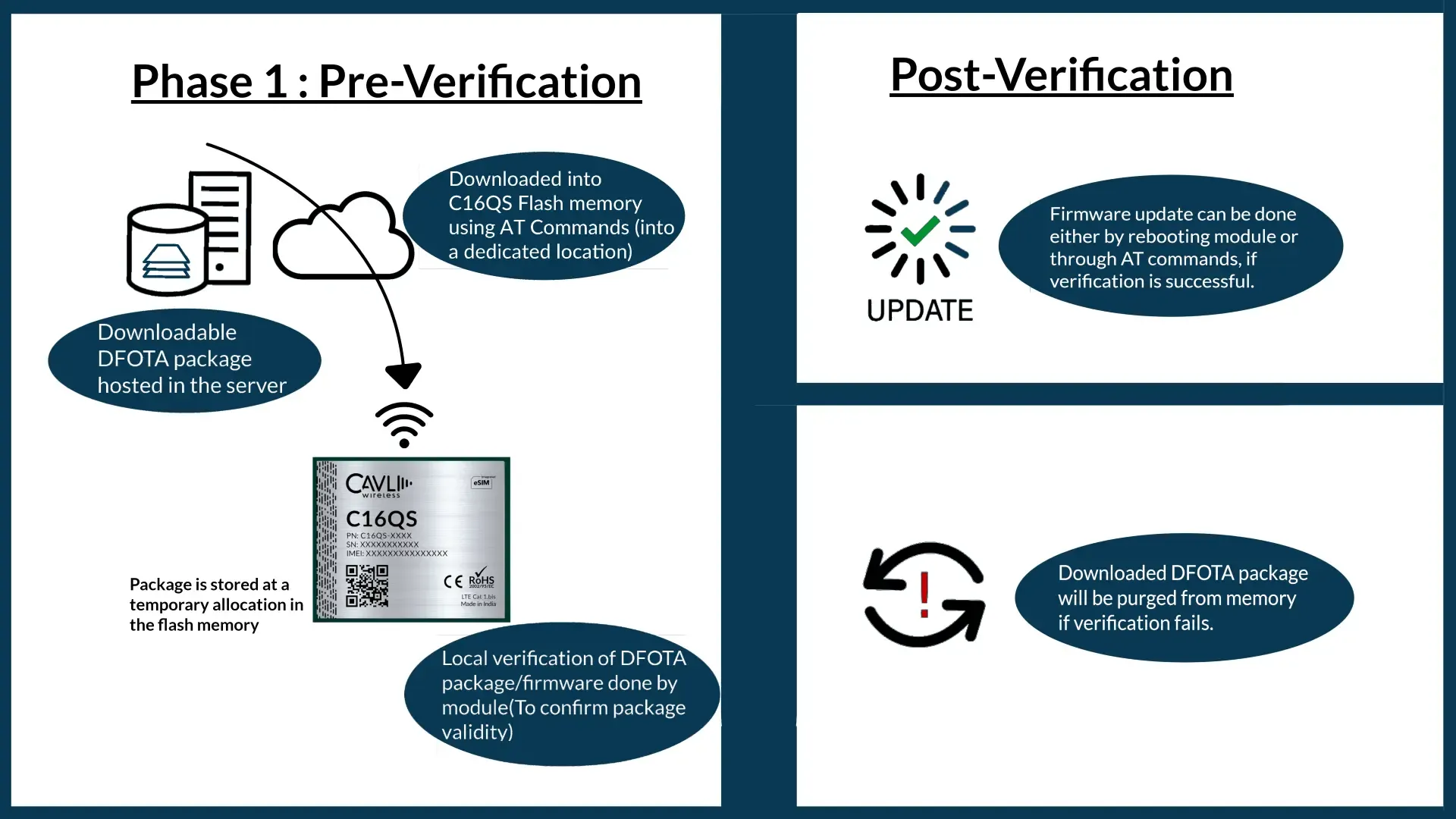
How will DFOTA benefit OEM's leveraging IoT?
Delta FOTA (Firmware Over-The-Air) presents significant advantages for IoT OEMs, particularly in applications like smart energy metering for smart cities. Let's consider a scenario where an OEM specializes in developing smart energy meters for urban infrastructure. These meters are tasked with measuring and managing electricity consumption in buildings and facilities. By integrating the C16QS module with DFOTA capability, these energy meters can efficiently transmit data to a central hub via the Cavli Hubble cloud platform.
Now, imagine a situation where the C16QS module initially offers a maximum bandwidth of 1Mbps through UART communication, making the smart meter capable of processing the power characteristics of say 5 devices simultaneously without any latency issues. Through a DFOTA update, the module's bandwidth can be upgraded to 3Mbps by the OEM without disrupting its core functionality. The greater bandwidth implies that the module can now handle upto 10 devices simultaneously.
Yet, the DFOTA package that facilitates this update can perform the pre-requisites for flashing while routine operations are not affected. This is a highlight takeaway of DFOTA technology that eases reliability concerns in critical sectors like banking and healthcare, where unexpectedly long downtimes that pave way for transaction failures or malfunctioning health monitoring systems, are recipes for disaster in the making.
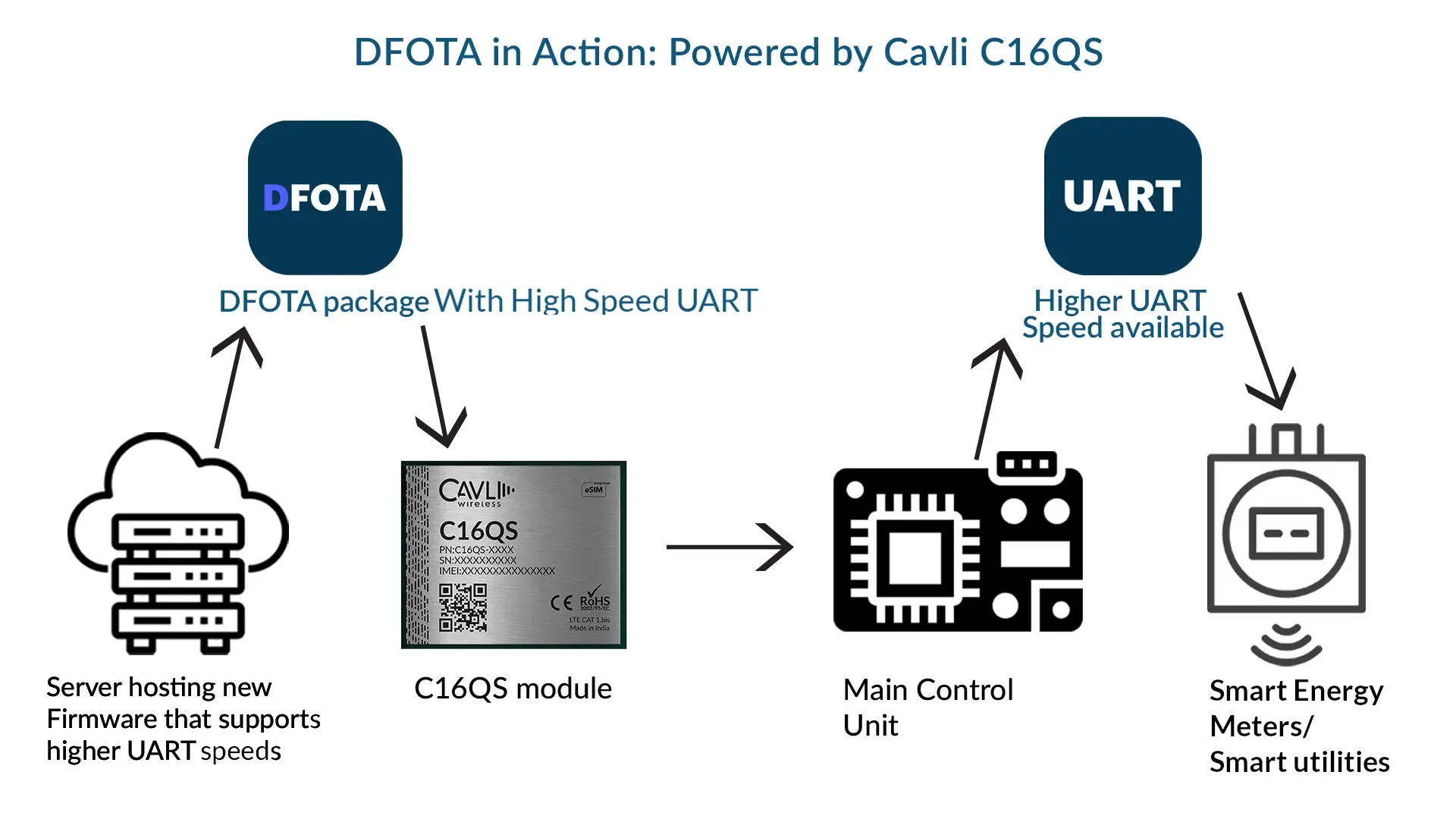
The Consumer Advantages of DFOTA
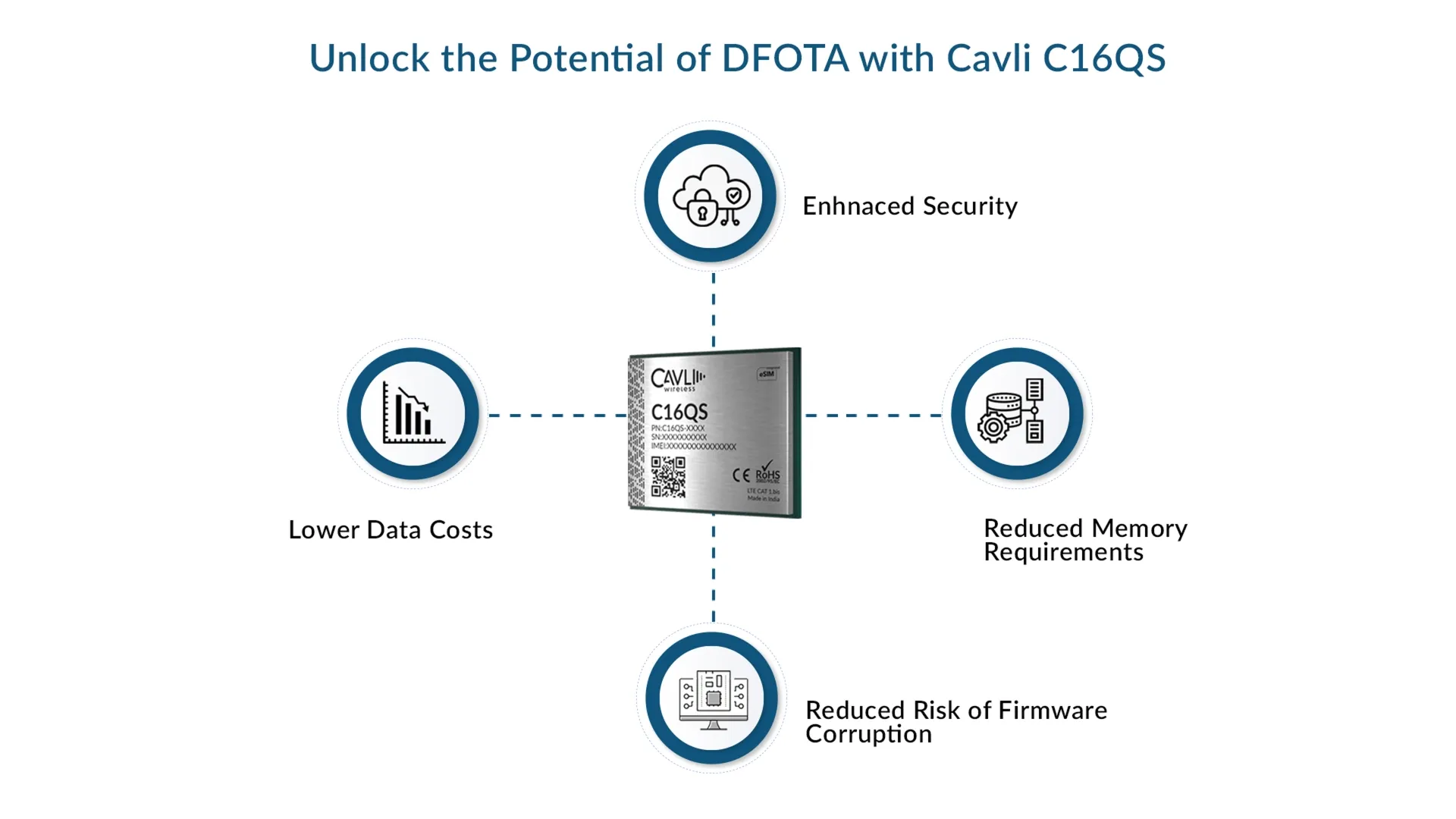
For urban residents and utility consumers, the integration of DFOTA into IoT modules like the C16QS presents significant benefits, particularly in scenarios such as smart energy metering for smart cities. With the C16QS module equipped with DFOTA, consumers gain the ability to remotely monitor and manage their electricity usage without the need for on-site visits. Through the Cavli Hubble platform, consumers can access real-time data from their smart energy meters, enabling them to make informed decisions regarding energy consumption and efficiency.
Imagine a situation where a DFOTA update is released and a property developer wants to upgrade the firmware of the smart energy meters on his properties/sites. Considering factors such as monthly data subscription cost, multiplied over many properties, multiple times in a year. Suddenly the cost for a simple software upgrade (through conventional FOTA), seems monumentally high.
Whereas, A DFOTA update requires minimal memory and computing resources compared to conventional firmware flashing methodologies. This translates to lower data costs, as DFOTA updates typically involve smaller package sizes, reducing the amount of data bandwidth required for DFOTA packages.
Moreover, Cavli's DFOTA employs a differential update method with pre-programmed local checksum verification, significantly minimizing the risk of firmware corruption due to potential errors during the update process. With verification policies in place that decide whether a downloaded DFOTA package is flash worthy, such policies ensure that the only downtime required is for the completion actual flashing procedure, which at most would take two minutes. In essence, DFOTA serves as a foundation for robust and secure connectivity solutions that enable consumers to utilize their smart devices to their full potential.
In addition, the benefits of DFOTA offered in the C16QS module extend beyond smart energy metering applications or health monitoring systems. to telematics systems of two-wheelers various industries and use cases. Whether it's remote asset tracking in logistics, environmental monitoring in agriculture, or smart city infrastructure management, or two wheeler telematics, the consistency, robustness and security offered by DFOTA are invaluable. With the C16QS module equipped with DFOTA, IoT solutions across industries can operate more efficiently and reliably. Whether it's optimizing performance, enhancing security, or improving scalability, DFOTA on the C16QS module provides a solid foundation for driving innovation and maximizing the potential of IoT deployments across diverse domains.
Managing a Million Devices with one Platform : Cavli Hubble™
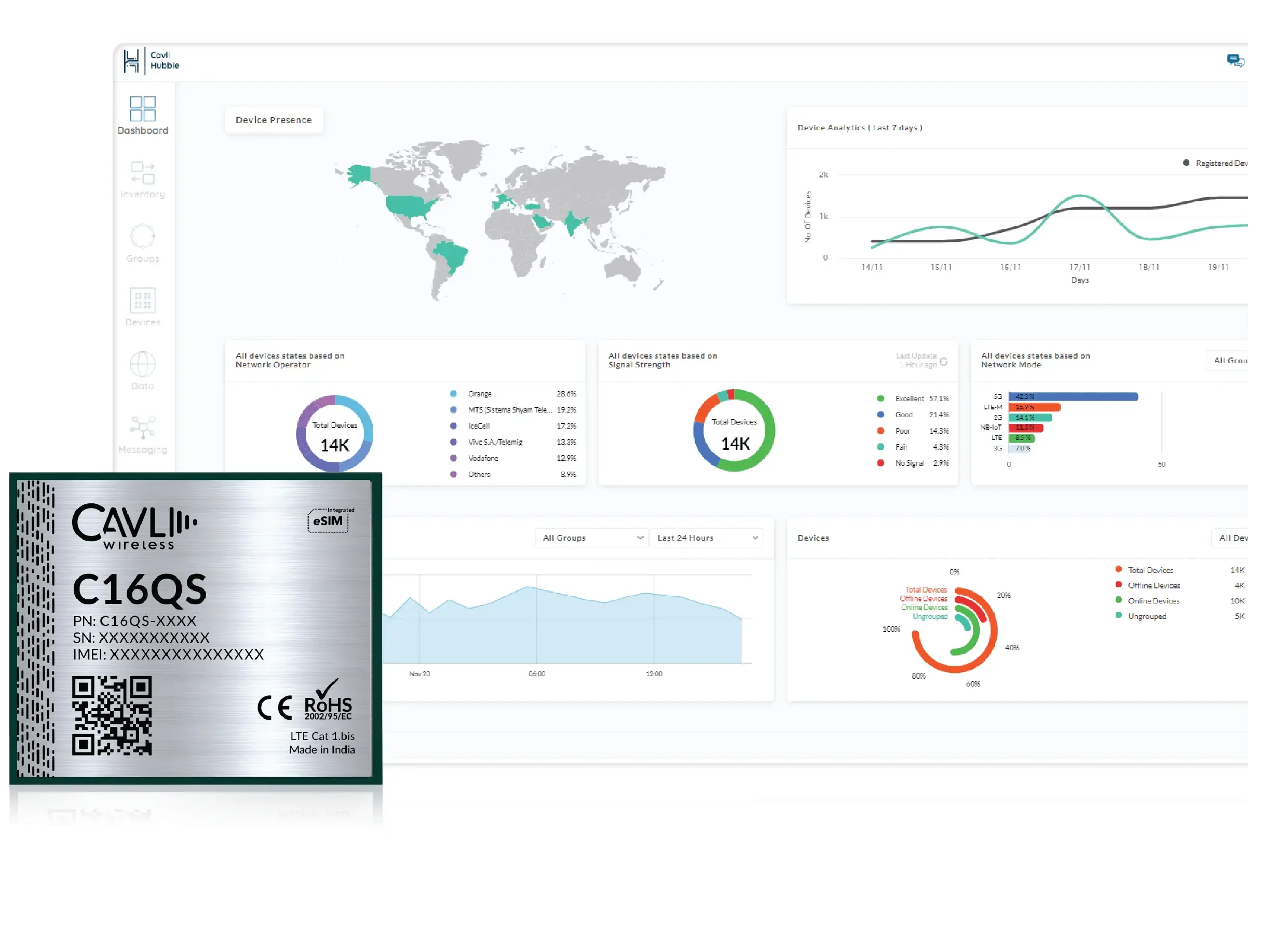
Pairing the C16QS with Cavli Hubble, a comprehensive device management system, creates a powerful combination for managing IoT devices. This synergy offers seamless device deployment and management, enhancing the customer experience with Stack Intelligence and Global Connectivity. The integration of eSIM technology provides flexibility in network selection and global connectivity, crucial for devices deployed across various regions. This feature, combined with region-specific cellular band connectivity, ensures that the C16QS can seamlessly adapt to different network environments.
Conclusion: The C16QS as a Comprehensive IoT Solution
In conclusion, the Cavli C16QS module, available in various regional variants, is not just a component but a comprehensive solution for a wide range of IoT applications. Its compatibility with Cavli's other modules, like the C42GM and C42QM, adds to its versatility. With features like DFOTA, eSIM integration, and advanced tracking capabilities, the C16QS is ideally suited for transitioning from legacy 2G and 3G solutions to LTE, paving the way for a new era of efficient and reliable IoT solutions.

